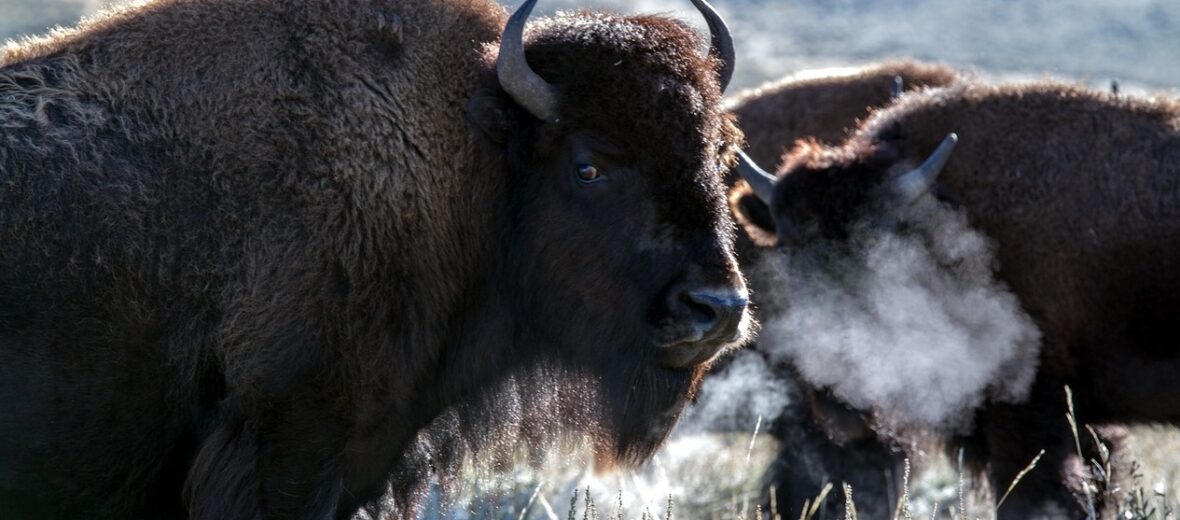
Along with the bald eagle, the American bison is one of the most amazing revival stories of our time. Once hunted to near extinction, the bison has made a huge comeback. If it weren’t for the the aid of private citizens working with states, tribes, and the Interior Department the few hundred remaining bison would now be extinct. These lumbering beasts have been around for close to 2 million years and numbered in the millions. Their population declined severely from millions to only a few hundred due to European settlers moving west, culling, and over hunting. They are now listed by the IUCN as Near Threatened.
First the Stats…
Scientific name: Bison bison
Weight: Up to 2,200 lbs.
Length: Up to 12.5 feet
Height: Up to 6.5 feet
Lifespan: Up to 25 years
Now on to the Facts!
1.) The only place in the U.S. where bison have continually lived for nearly 2 million years is Yellowstone National Park.
2.) The Yellowstone park bison herd is one of the few that has stayed genetically free of cattle genes. Others have been interbred with cattle.
3.) American bison are North America’s largest land mammal.
4.) A bison’s hump is made of muscle. It is supported by long vertebrae. This allows the animal to use its head to plow through thick snow.
5.) Bison and buffalo is a term used interchangeably, in North America the scientific name is Bison bison bison (genus: Bison, species: bison, subspecies: bison). It is believed that the term “buffalo” came from the French word for beef, “boeuf.”
But wait, there’s more on the American bison!
6.) Bison have been hugely integral to tribal cultures, providing them with clothing, food, tools, fuel, shelter, and spiritual references.
7.) When their tail hangs down and switches naturally, the bison is typically calm. If the tail is standing straight up, it’s likely ready to charge!
Did you know…?
Before they were nearly exterminated, 30 – 60 million bison roamed from Canada to northern Mexico and from the Plains to Eastern forests. By circa 1890, only about 1,000 existed, including 24 in Yellowstone National Park.
8.) Bison calves are called “red dogs”.
9.) Foraging 9 – 11 hours a day, these beasts are strictly herbivorous (eat plant matter).
10.) American bison roll in the dirt to ward off biting flies and to help shed their winter coat. This is called wallowing. Male bison also wallow during the mating season to scent mark and show off their strength.
But wait, there’s still more on the American bison!
11.) To make up for their poor vision, they have an amazing sense of smell and hearing.
Did you know…?
They may look like lumbering beasts, but these huge critters can run up to 35 mph!
12.) Cows and calves communicate by using pig-like grunts. During the mating season, you can hear bulls (males) bellowing across long distances.
13.) Males will “tend” or guard the females they are interested in for hours or even days. During the rut they will aggressively fight off any competing males by head butting and locking horns.
14.) Females give birth to a single calf after a 9 month gestation (pregnancy). After about 2 months, the calf’s hump begins to appear.
15.) Wolves, mountain lions, and bears all attack young, elderly, and sick bison.
Now a Short American Bison Video!
Also, check out the Critter Science YouTube channel. Videos added frequently!
Want to suggest a critter for me to write about? Let me know here.



